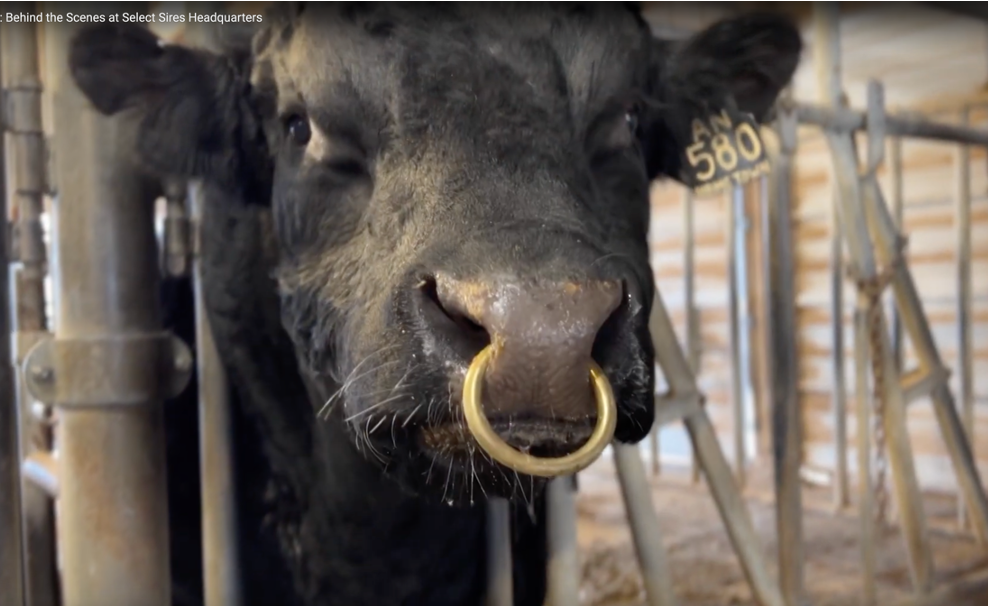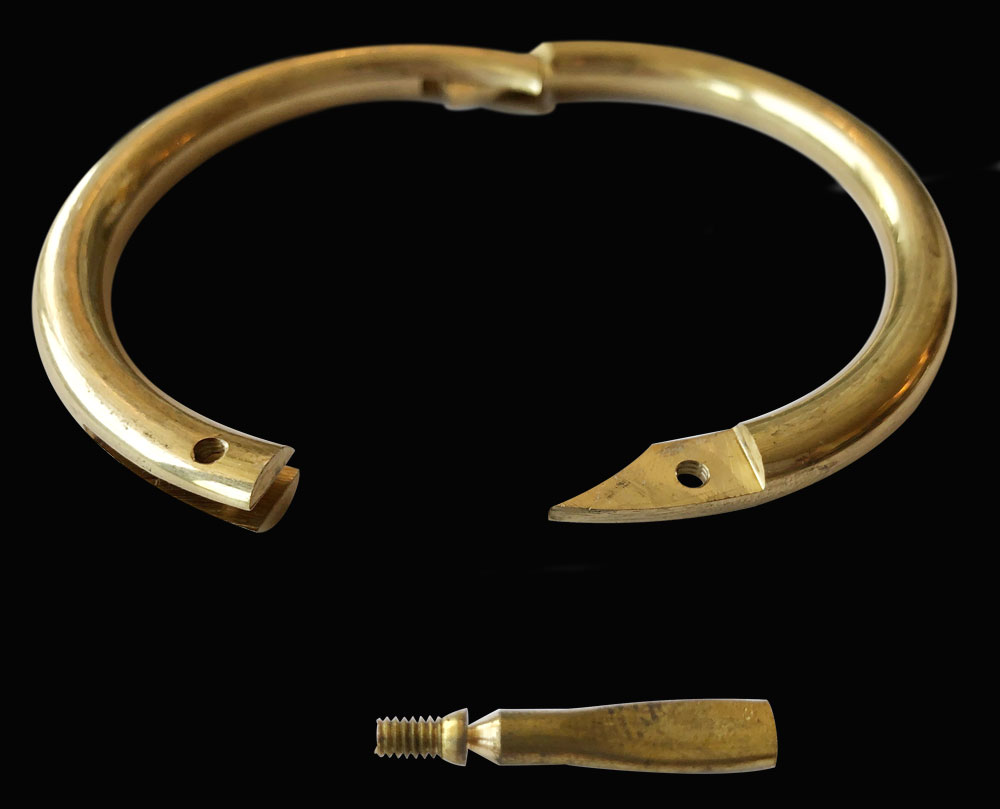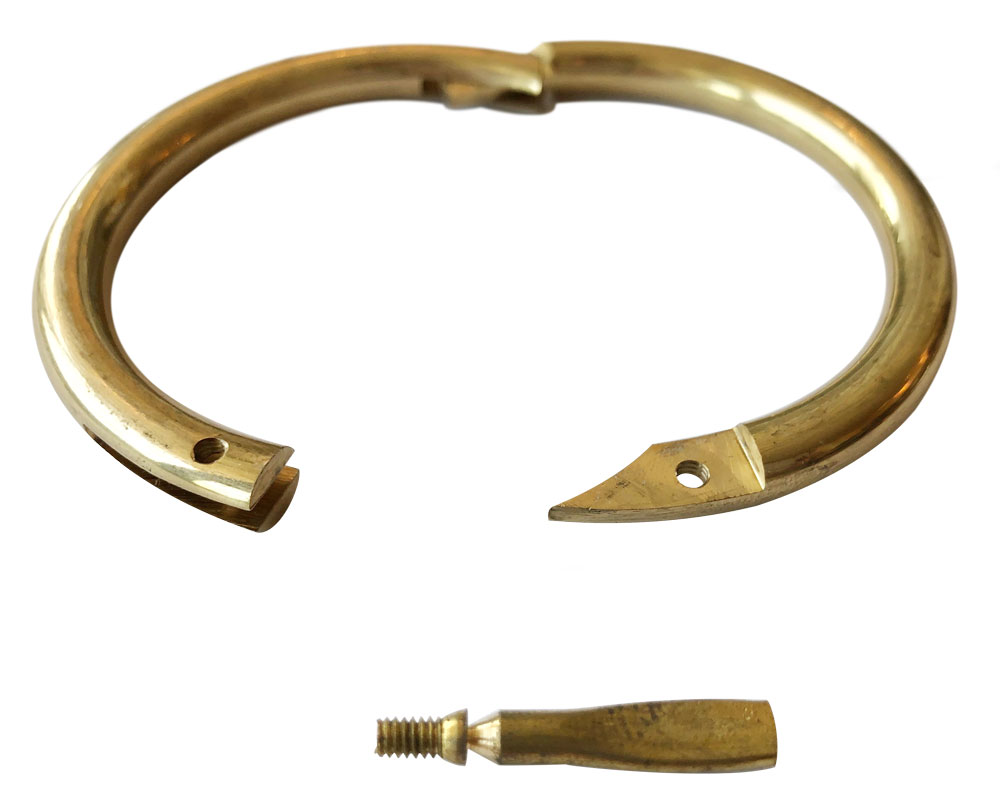Additional information
The bull ring is a pain compliance device.
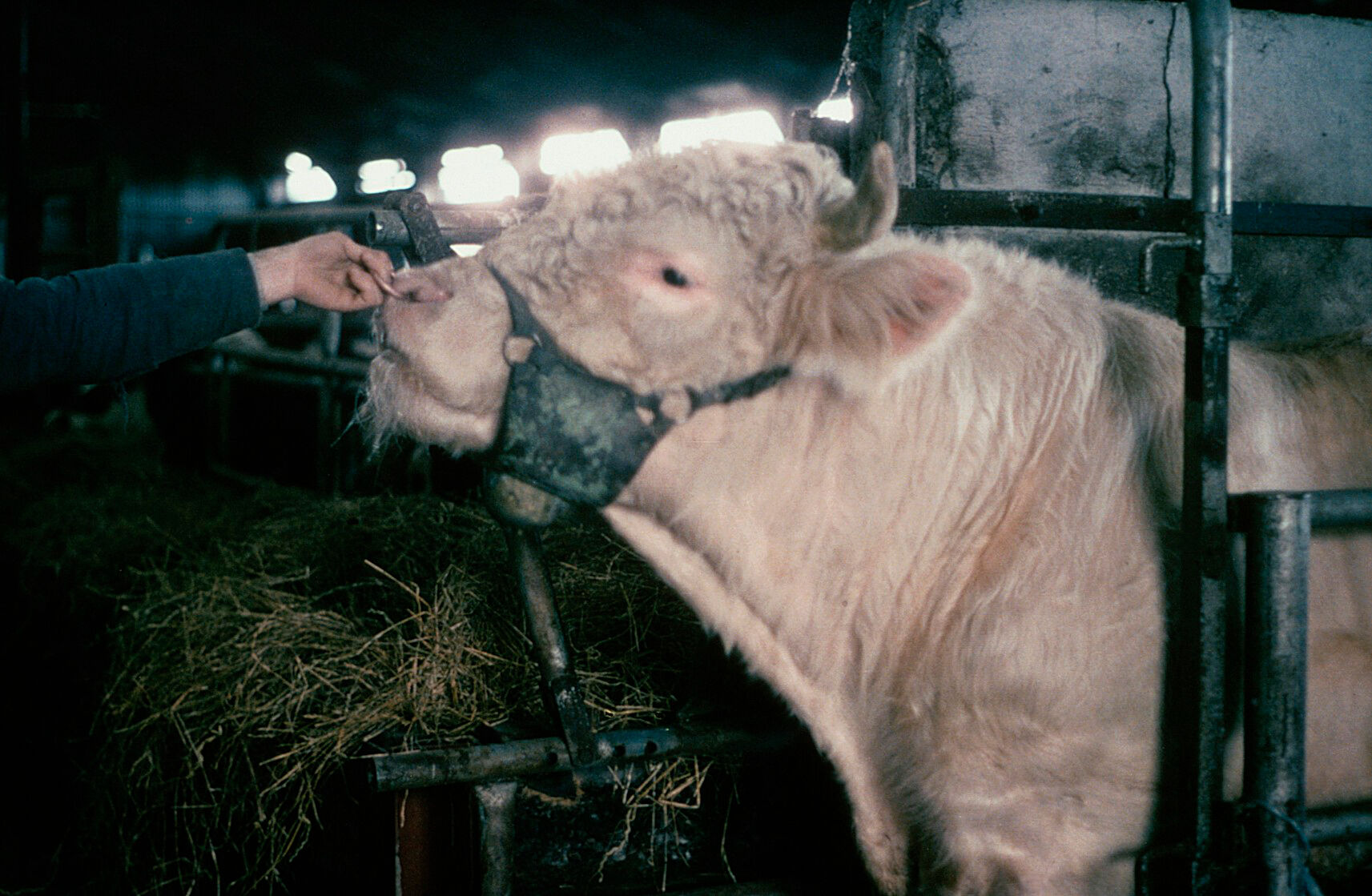
It is pierced through the sensitive flesh of a bull’s nasal septum usually when they are around 1 year of age. It allows a human to gain control over an uncastrated adult male bovine through the coercive threat of extreme pain. This device does not merely neutralize resistance when it emerges, it diminishes the expression of resistance before it emerges.
Once a bull ring has been installed, a bull can be tethered in place by the nose, or he can be led by attaching a rope or a rigid staff to the ring. To enhance the threat of pain, a long chain may be left hanging from the ring which prevents a bull from walking or running freely. The bull ring is typically used to control uncastrated male bovines but can be used to control castrated males as well as female bovines.
To understand the bull ring, it is necessary to understand that bulls are kept in human systems of extraction to serve as a source of semen. For this reason, he escapes the routine method of behavioural control through castration. Uncastrated male bovines are considered unpredictable and dangerous by their human captors. The bull ring is one way to achieve the enhanced control that is necessary for a human to safely extract semen from a bull through a variety of methods.
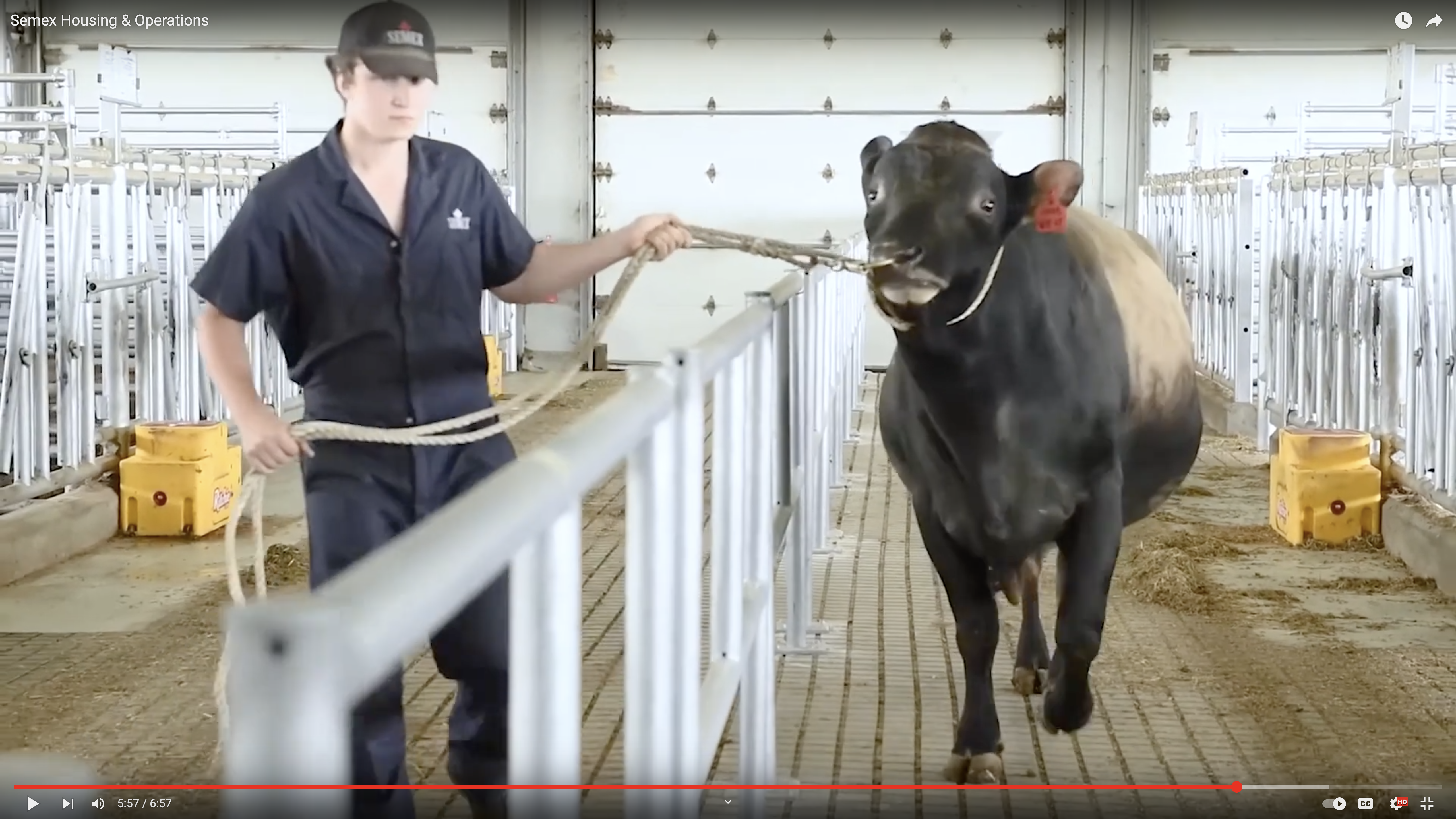
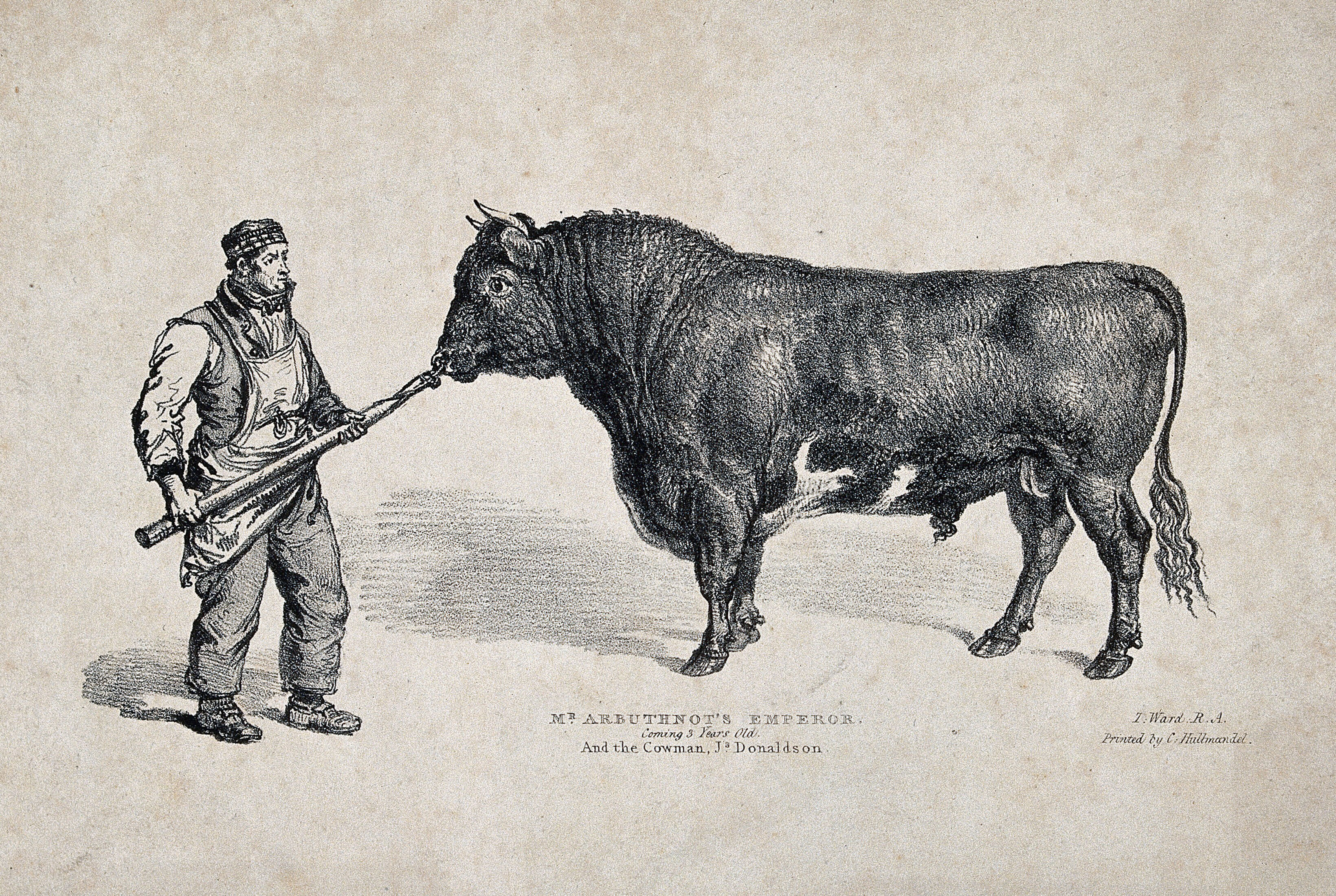
In addition to simply setting a bull loose to breed with a group of female bovines in a ranging area (which producers call “natural service”) or with a single female held in a breeding chute (referred to as “hand-mating”), animal producers in the 20th and 21st century rely heavily on artificial insemination as part of their reproductive programs. Artificial insemination programs require securing a supply of semen that must be extracted from bulls by humans.
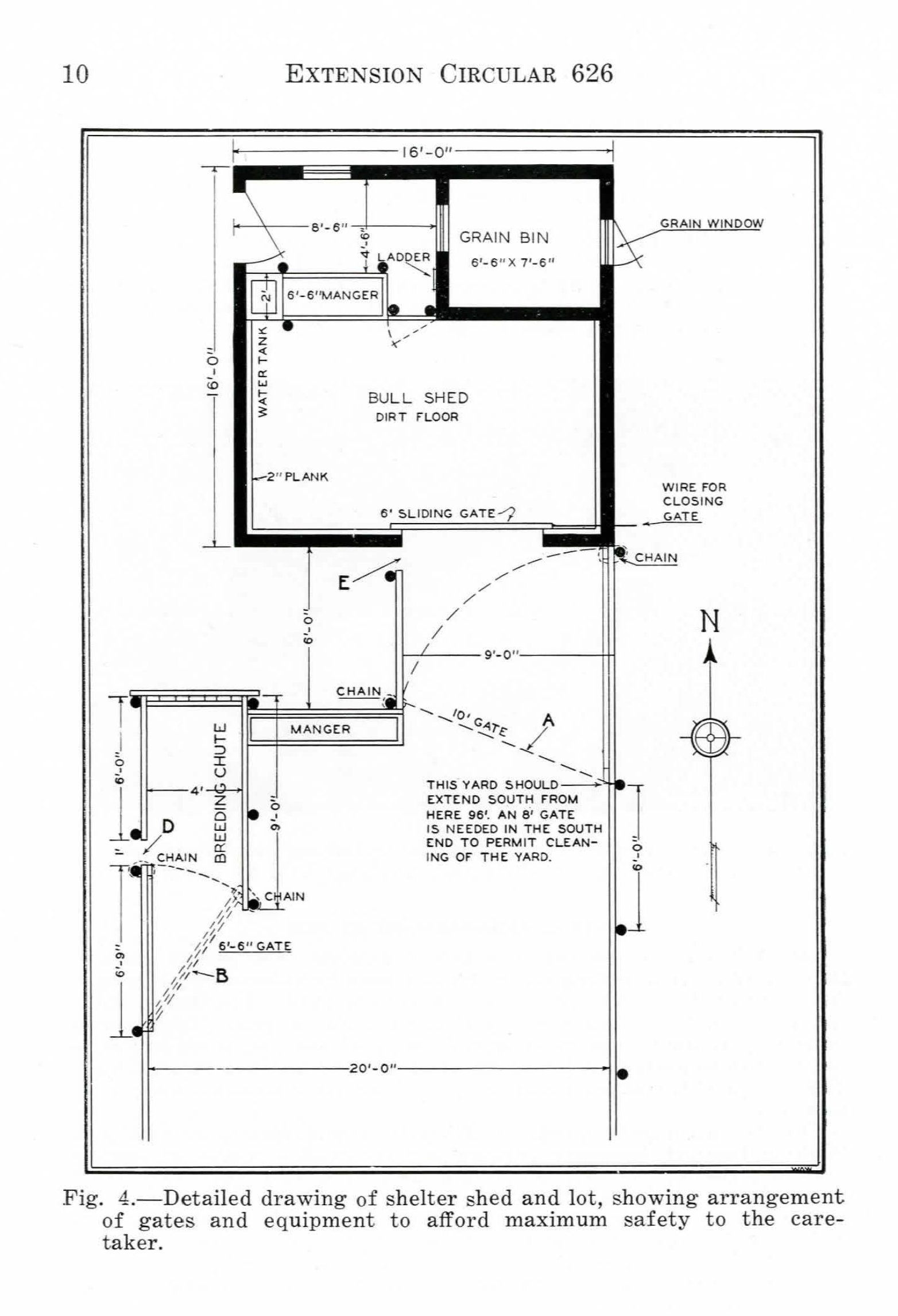
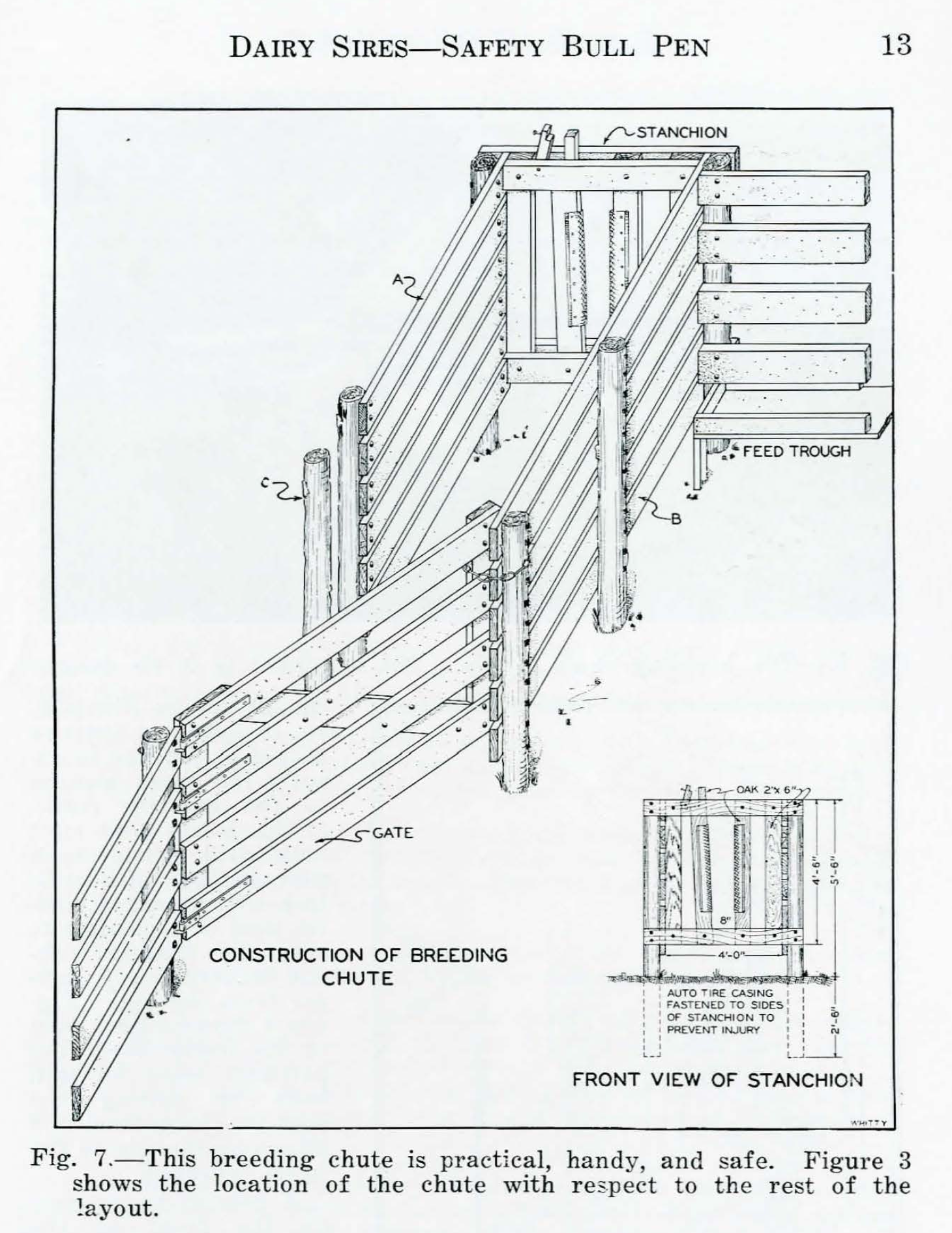
The wide adoption of artificial insemination in systems of animal extraction has led to the growth of semen extraction centres in North America.
Artificial insemination increases the efficiency and genetic control of reproductive programs in animal extraction operations and helps producers reduce the spread of venereal disease between their extractive subjects. While the “bull to cow ratio” (BCR) for “natural service” is around 1:20/30 per breeding season, a single bull held in a semen extraction centre can be used to inseminate thousands of cows over their servicing lifetime. A bull held in an insemination centre may be extracted several times a day, two to three days per week, for up to ten years.
Semen extraction centres utilize two methods for extracting semen from bulls. The primary method relies on the use of an artificial vagina (or AV). The secondary method is electroejaculation (or EEJ). For a description of EEJ, see accompanying entries under Sexual and Reproductive Compulsion.
The artificial vagina method of semen extraction involves inducing a bull to engage in sex with a “mount animal” which a human redirects into an artificial vagina. The mount animal, also called a “teaser,” who is conscripted to act as the sexual object is usually a castrated male who is restrained in a short-sided chute or by a head halter or head gate, with his backside accessible to the bull. Sometimes the mount animal is just an inanimate “dummy” made to look more or less like a cow.
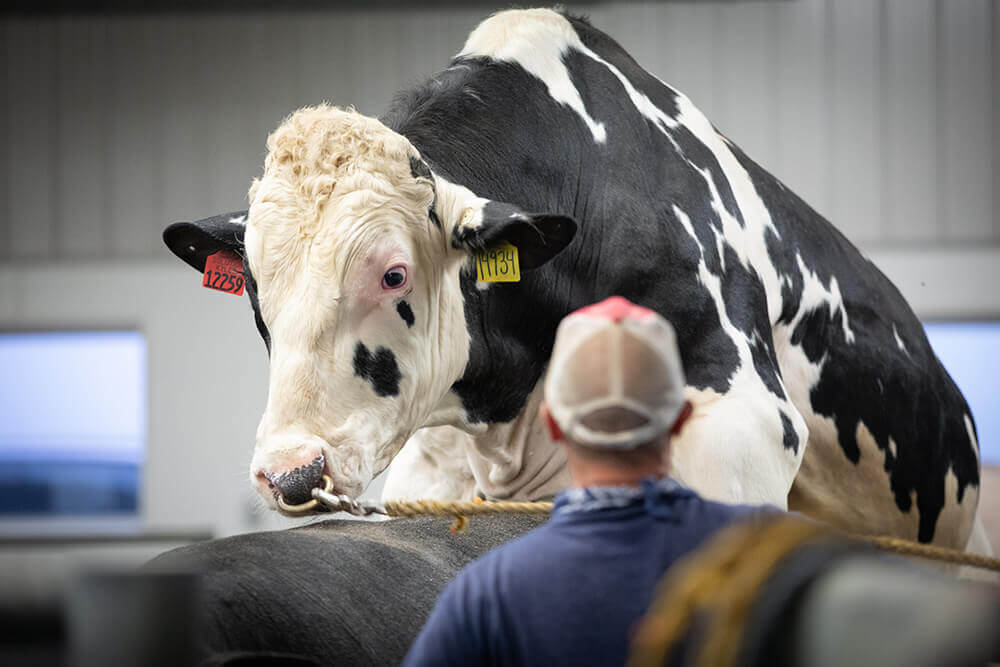
In the third phase, the bull’s thrust is diverted by a human into an artificial vagina. The human uses the artificial vagina to ejaculate the bull. The extracted semen is collected in a vial attached to the artificial vaginal sleeve.
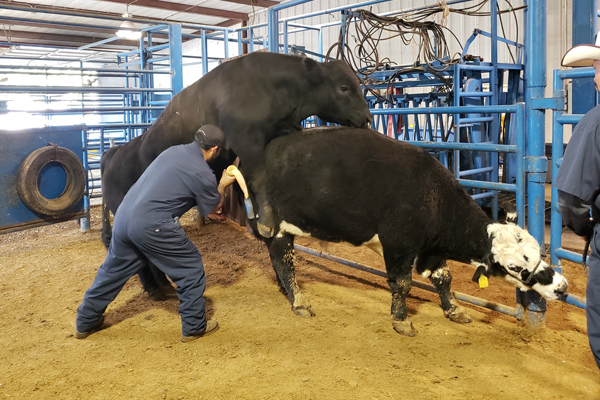
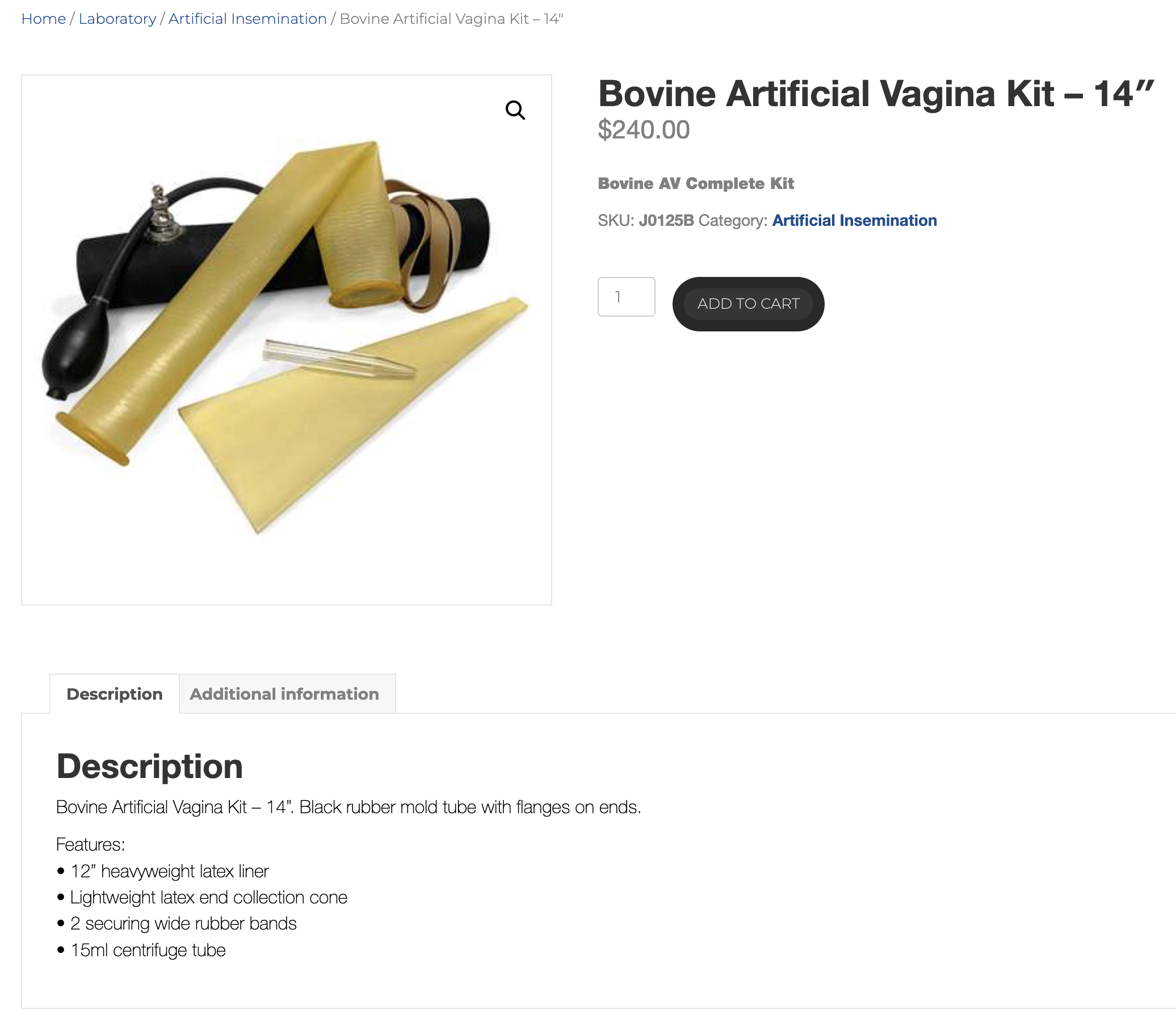
At the centre of this elaborate human-animal sexual congress is the bull ring which helps humans to achieve the intense and delicate control required to conduct bulls through this intimate procedure.
